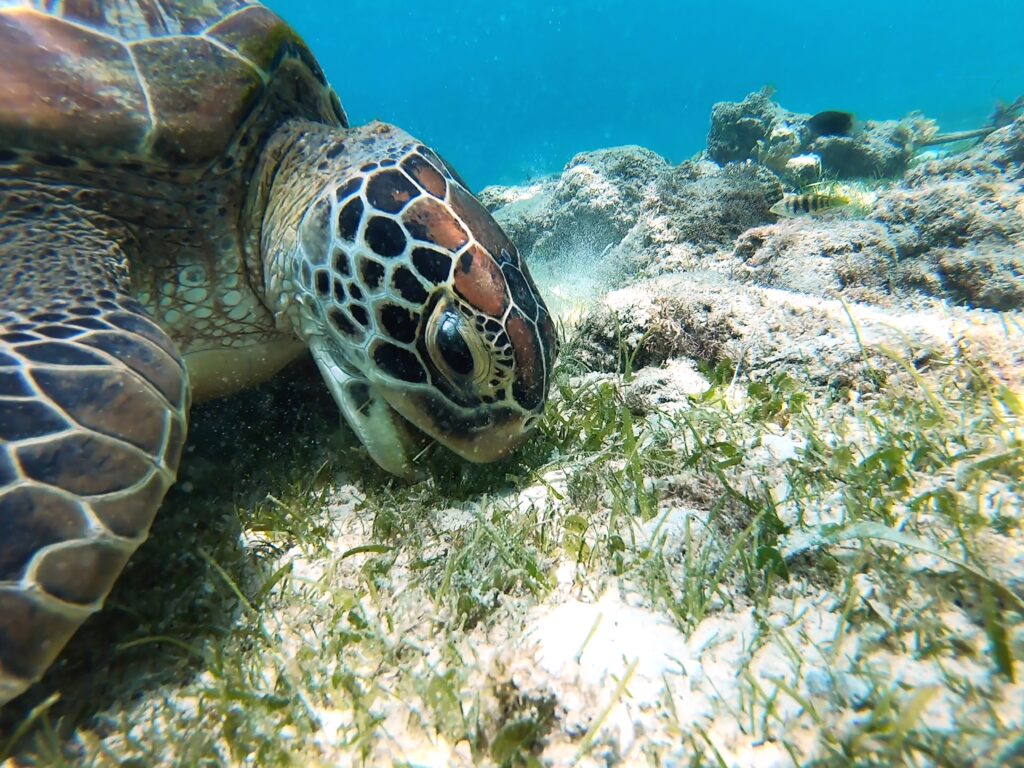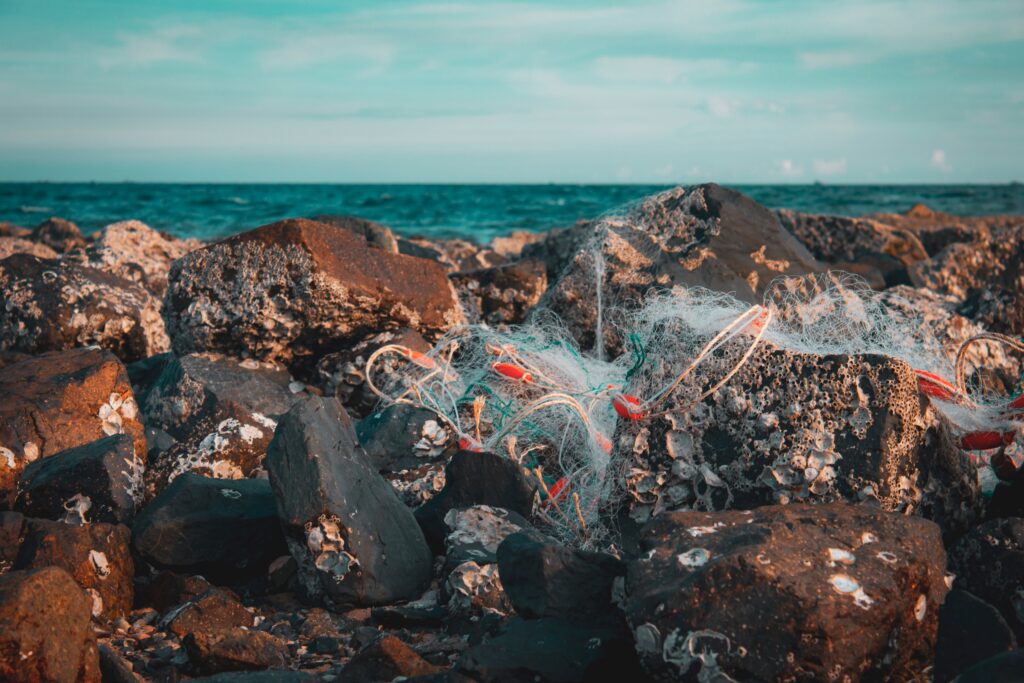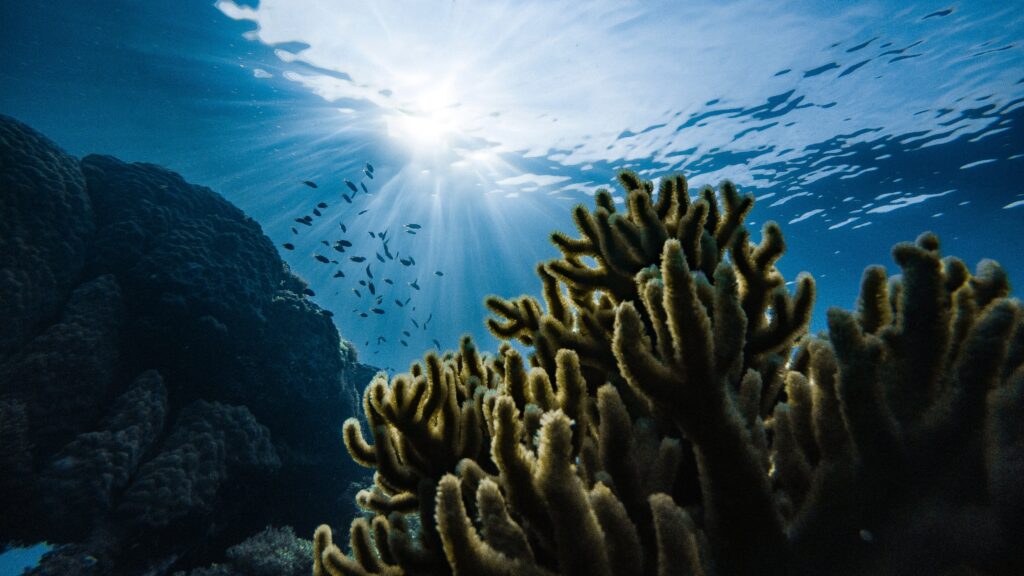
Earth’s ecosystems are dying fast
The Earth’s oceans, vital to the survival of life on our planet, are currently facing a crisis of unprecedented magnitude. Oceans, covering more than 70% of our planet’s surface, play a crucial role in sustaining life as we know it. These vast blue expanses are not just breathtakingly beautiful, but they serve as the backbone of Earth’s ecosystems and climate regulation. Sadly, marine life is facing a catastrophic decline, mirroring the fate of wildlife on land.
According to alarming reports from the World Wide Fund for Nature (WWF), the global population sizes of wildlife have plummeted by a staggering 60% between 1970 and 2014. Even more concerning is the loss of 50-75% of all marine life over the past four decades. The consequences of these trends are far-reaching, impacting ecosystems and climate regulation, making the preservation of our oceans a pressing global concern.
We need to ban industrial fishing in all its forms to save the oceans. The system of red-listing fish is not working as soon as one species is added to the list, the fishing industry simply consumes another species until that too is endangered, and so the circle continues. It is evident that a more holistic and decisive approach is required to address the crisis and protect the fragile marine ecosystems that sustain life on Earth.
The choice to consume fish is not supported by scientific necessity, leaving us with a simple yet crucial decision – to opt not to include fish in our diets.
The Ocean’s Vital Role in Ecosystems and Climate
The oceans are the cradle of life on Earth. They act as essential oxygen generators, producing approximately 50% of the world’s oxygen. Phytoplankton, microscopic marine plants, play a pivotal role in this process through photosynthesis. This oxygen-rich environment supports countless marine species, contributing to the overall biodiversity of our planet. Additionally, the oceans function as significant carbon sinks, absorbing a substantial portion of the excess carbon dioxide from the atmosphere, thus mitigating the impacts of climate change.

Threats to Marine Life
Human activities, particularly industrial fishing and trawling, have become major contributors to the decline of marine life. Overfishing, in which marine species are caught at an unsustainable rate, disrupts the natural balance of ecosystems and pushes numerous species to extinction. Trawling, the practice of dragging large nets across the ocean floor, causes immense damage to fragile marine habitats, such as coral reefs and seagrass meadows, disrupting the homes and breeding grounds of countless marine species. Trawling could be likened to hunters using bulldozers to hunt for deer, destroying the forest in the process.
Plastics

Plastic pollution has emerged as a significant threat to marine life, with devastating consequences for the oceans and their inhabitants. A huge amount of plastic waste in our oceans is derived from discarded fishing gear, tools, and other debris from the fishing industry. These ghost nets and plastic fragments entangle and endanger marine creatures, leading to injuries, suffocation, and death. Additionally, plastic particles leach harmful chemicals into the water, contaminating the food chain and affecting marine organisms, including those that humans consume.
Fishing
While fish has been traditionally promoted as a valuable source of essential nutrients like omega oils and vitamins, a growing body of evidence indicates that it may no longer be a safe dietary option. Fish from polluted waters often contain toxins and heavy metals, posing serious health risks, particularly for vulnerable groups. Sweden’s national food agency advises against consuming fish during pregnancy due to these concerns. Many varieties of fish, such as Tuna and Herring, should not be eaten by children and women in fertile age more than a few times a year because of the high amounts of toxins.
The list of toxins in fish is large, but some of the most common are
- Mercury: Mercury is a highly toxic heavy metal that is released into the environment from industrial processes. It has adverse effects on the nervous system, especially in children and pregnant women.
- PCB (Polychlorinated Biphenyl): Despite being banned in many countries, they persist in the environment and can accumulate in fish. PCBs are known to be carcinogenic and may also impact the immune and reproductive systems.
- Arsenic: Arsenic is a naturally occurring element found in rocks and soil. It can leach into water bodies. Fish can accumulate arsenic in their tissues, and prolonged consumption of arsenic-contaminated fish can lead to health issues.
- Cadmium: A heavy metal that can be released into the environment through industrial processes and mining. It is toxic to humans and animals, and fish can accumulate cadmium in their tissues. Prolonged consumption of cadmium-contaminated fish can have adverse effects on the kidneys and other organs.
- Lead: A heavy metal that can contaminate water bodies through various human activities, including industrial discharges and the use of lead-based products. Fish can accumulate lead in their tissues, and consumption of lead-contaminated fish can be harmful to human health, particularly affecting the nervous system and development in children.
- PAH (Polycyclic Aromatic Hydrocarbon): PAHs are a group of organic compounds that can be found in the environment due to the incomplete burning of fossil fuels, wood, and other organic materials. Fish can accumulate PAHs, which are known to be carcinogenic.
- PFAS (Per- and Polyfluoroalkyl Substances): PFAS have become a major environmental concern due to their persistence in the environment, resistance to degradation, and ability to bioaccumulate in living organisms, including fish. They have an adverse effects on the immune system, increased cholesterol levels, cause developmental issues, and are carcinogenic.
It is clear from empirical evidence and scientific research that it is entirely possible to obtain all necessary nutrients from land-based, non-polluted sources. With the availability of diverse plant-based alternatives and fortified products, there is no longer an essential need for humans to consume fish.
Fish as Feed for Agriculture
In certain intensive dairy and beef farming operations, fishmeal and fish oil are included in the animal’s diet to enhance growth and increase milk production. These fish-derived feeds are rich in omega-3 fatty acids and other nutrients that can positively influence cattle health and productivity.

According to a report by Reuters, a staggering 37% of all fished fish worldwide is utilized to feed pigs, cows, and other animals. In certain regions, fishmeal and fish oil can constitute up to 5% of dairy cattle feed and up to 20% of beef cattle feed. Not only is this an inefficient use of marine resources that exacerbates the strain on marine ecosystems, it is also highly unethical to feed fish to herbivores.
Hope Spots
Preserving our oceans and marine life is not just an environmental issue; it is a matter of global survival. The health of the oceans is intricately linked to our well-being and future. Failure to address this crisis will have far-reaching consequences, affecting climate patterns, food chains, and the livelihoods of millions of people who rely on the oceans for sustenance.

“The next five years may be the most important in the next ten thousand for our planet. There are plenty of reasons for hope, yet every day, doors of opportunity close. We know what to do. Now is the time to act.”
– Dr. Sylvia Earle
Mission Blue, an alliance founded by the renowned marine biologist, Dr Sylvia Earle, is advocating for the creation of Hope Spots, which are special places that are critical to the health of the ocean. Hope Spots are chosen for their contributions to biodiversity, the carbon sink, and important habitat. Hope Spot status is intended to alleviate the pressures human resource extraction places on the ocean by making the site higher priority to become a Marine Protected Area, where resource extraction, like fishing and drilling, may be forbidden under law.
Promoting Marine Protected Areas (MPA) is important to safeguard biodiversity and allow marine ecosystems to recover. MPAs are designated zones where human activity is restricted or prohibited, providing refuge for marine species to breed and thrive. These areas also contribute to the overall health of the oceans by promoting ecosystem resilience and protecting vulnerable habitats.
Solution
The proposed solution to halt all forms of industrial fishing, including large-scale operations, is not without merit. While this might be a significant step for humanity to take collectively, the stakes are too high to ignore. It is crucial to explore sustainable alternatives to ensure the continuity of fishing practices for those communities who depend heavily on the sea for their survival. By supporting and promoting small-scale, local fisheries for those communities, and help them diverse, we can strike a balance between human needs and ecological preservation, allowing marine ecosystems to recover and thrive.
The decline of marine life and wildlife is an urgent call for action. To secure a sustainable future for our planet, we must recognize the invaluable role that the oceans play in our ecosystems and climate regulation. By stopping all forms of industrial fishing and promoting sustainable fishing practices, we can begin to reverse the catastrophic trends of marine degradation and depletion of wildlife populations. Together, as a global community, we can ensure that the oceans remain bountiful for generations to come. It is not just the responsibility of a few, but a collective duty we all share.
Only through concerted efforts and immediate action can we hope to restore the health and vitality of our oceans and safeguard the future of life on Earth.
After all, there are no technical or scientific difficulties in not eating fish. It is purely a choice, and not even a difficult one.

